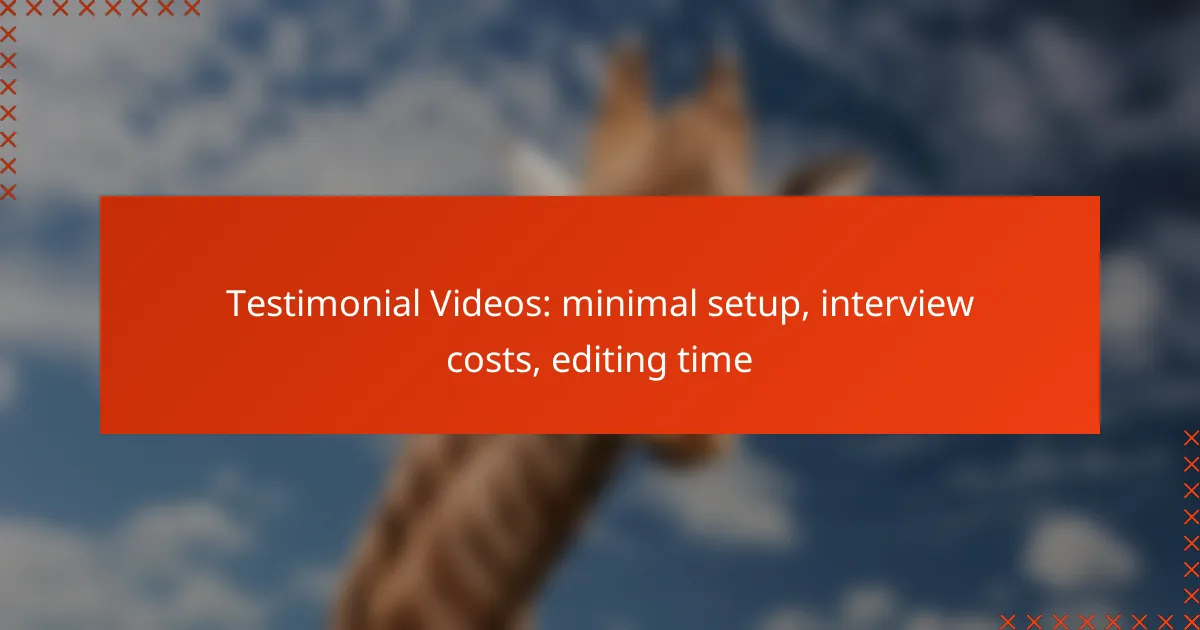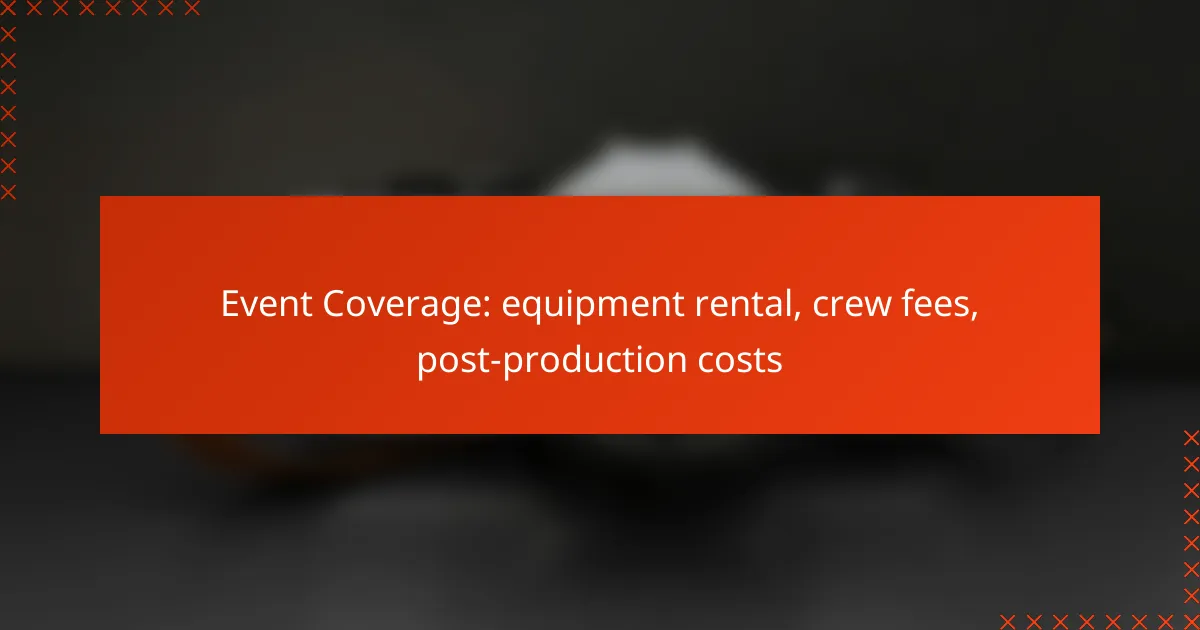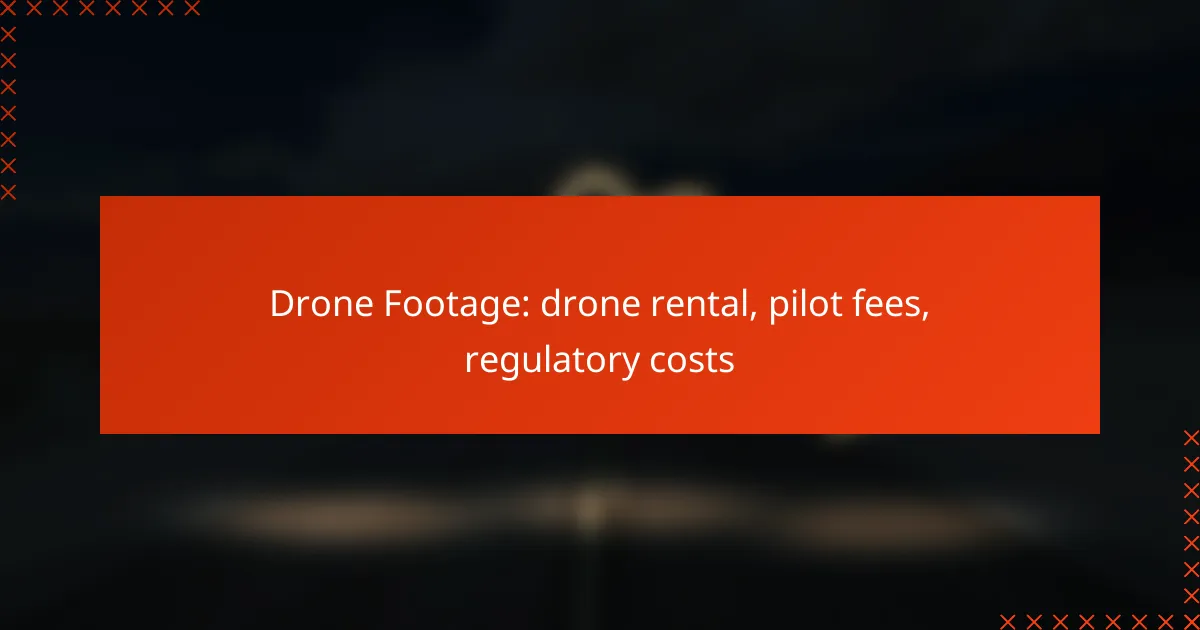Animated videos can be a powerful tool for communication, but their design costs can vary greatly depending on factors like animation type, complexity, and production quality. Businesses need to consider not only the design expenses but also investments in specialized software and voiceover talent, which can significantly influence the overall budget. Understanding these elements is crucial for effective planning and execution of animated video projects.
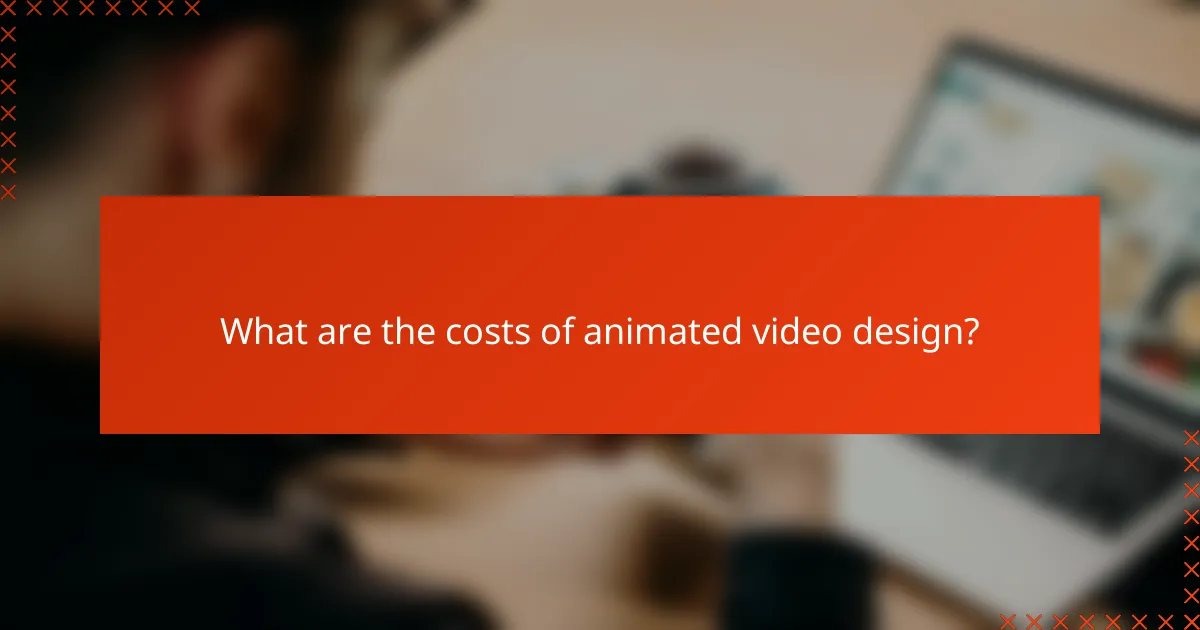
What are the costs of animated video design?
The costs of animated video design can vary significantly based on factors such as the type of animation, complexity, and production quality. Generally, businesses should expect to invest in both the design process and additional elements like voiceovers and software tools.
Average costs for 2D animated videos
For 2D animated videos, costs typically range from a few hundred to several thousand dollars, depending on the video’s length and complexity. Simple animations may start around $1,000, while more intricate projects can exceed $5,000. Freelancers often charge less than established studios, but quality may vary.
It’s essential to consider the purpose of the video when budgeting. For marketing or educational content, investing in higher-quality animations can yield better engagement and retention rates.
Average costs for 3D animated videos
3D animated videos generally incur higher costs, often starting around $2,000 and reaching upwards of $10,000 or more for complex projects. The advanced technology and skills required for 3D animation contribute to these elevated prices. Shorter videos may still be costly due to the detailed work involved.
When planning a budget, keep in mind that 3D animations can provide a more immersive experience, which may justify the higher investment for certain applications, such as product demonstrations or high-end marketing campaigns.
Factors influencing design costs
Additional expenses may arise from hiring voiceover artists, purchasing software licenses, or incorporating sound effects and music. It’s advisable to outline your project requirements clearly to get accurate quotes from potential service providers.

What software is needed for creating animated videos?
Creating animated videos typically requires specialized software that caters to various skill levels and project needs. The right software can significantly impact the quality and efficiency of your animation process.
Popular software options for beginners
For beginners, user-friendly software like Animaker, Vyond, and Powtoon is ideal. These platforms offer drag-and-drop interfaces and pre-made templates, making it easy to create animations without extensive training.
Many of these tools operate on a subscription model, with monthly fees ranging from around $10 to $50, depending on features and usage limits. They often include tutorials and community support to help new users get started.
Professional software for advanced users
Advanced users often turn to software like Adobe After Effects, Blender, or Toon Boom Harmony for more complex animations. These programs provide extensive features, including advanced rendering, 3D capabilities, and detailed control over animation elements.
While these tools offer greater flexibility and professional-grade results, they come with steeper learning curves and higher costs, typically starting from around $20 per month for subscriptions or several hundred dollars for one-time purchases.
Cost comparison of animation software
The cost of animation software can vary widely based on functionality and user expertise. Beginner tools usually cost between $10 and $50 monthly, while professional software can range from $20 monthly to several hundred dollars for a full license.
When choosing software, consider your budget, the complexity of your projects, and the learning curve associated with each option. A simple table can help summarize the differences:
| Software Type | Price Range | Skill Level |
|---|---|---|
| Beginner | $10 – $50/month | Easy |
| Professional | $20/month – $700 one-time | Advanced |
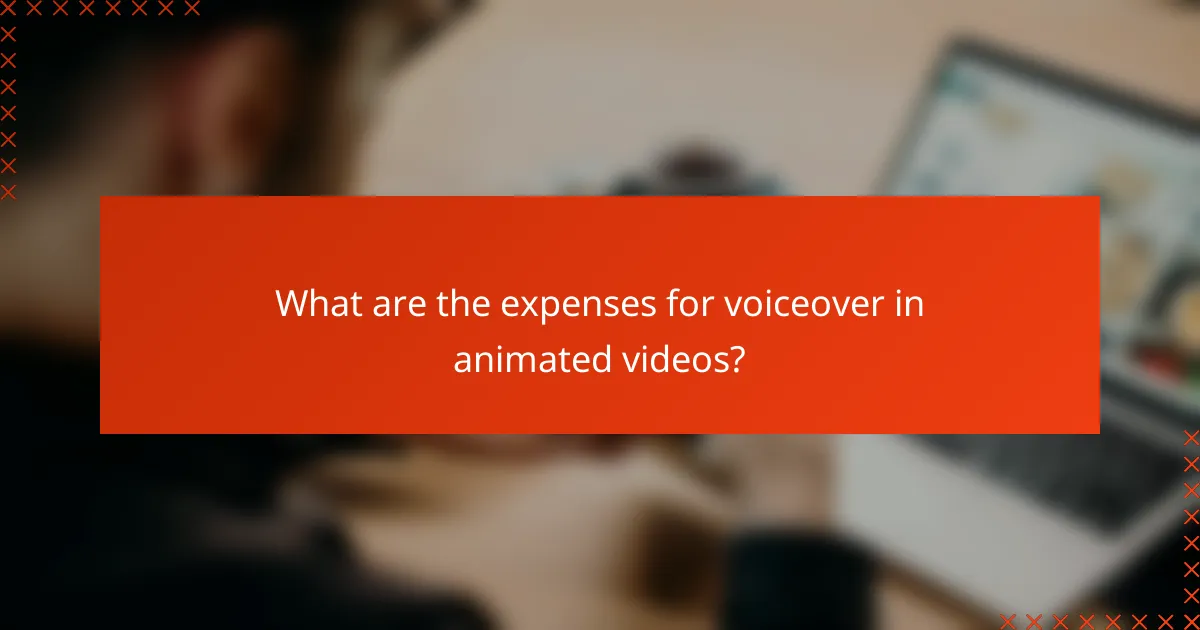
What are the expenses for voiceover in animated videos?
The expenses for voiceover in animated videos can vary significantly based on the choice of voice talent, technology used, and project specifics. Understanding these costs helps in budgeting effectively for animated video production.
Average rates for professional voiceover artists
Professional voiceover artists typically charge between $100 to $500 for a standard project, depending on their experience and the project’s complexity. High-profile talent may command rates in the thousands, particularly for commercial work.
Rates can also vary based on the length of the script and the intended use of the audio, such as whether it will be used in a local advertisement or a global campaign.
Costs of using AI voiceover tools
AI voiceover tools can be a cost-effective alternative, with subscription services ranging from $10 to $100 per month. These platforms often provide a variety of voice options and customization features.
While AI-generated voices have improved significantly, they may lack the emotional nuance of human voiceovers, which can affect the overall quality of the animated video.
Factors affecting voiceover pricing
Additionally, the complexity of the script and the required turnaround time can also impact pricing. Urgent projects may incur rush fees, while longer scripts may be charged at a per-word rate, often ranging from $0.10 to $0.50 per word.

How to choose the right animation style for your project?
Choosing the right animation style for your project involves understanding your target audience, the message you want to convey, and the resources available. Different styles can evoke various emotions and responses, so aligning your choice with your project goals is essential.
Comparison of animation styles
Animation styles can be broadly categorized into 2D, 3D, motion graphics, and stop motion. Each style has its unique characteristics and applications. For instance, 2D animation is often used for explainer videos, while 3D animation is popular in gaming and product visualization.
Motion graphics typically focus on text and graphic elements, making them suitable for advertisements and presentations. Stop motion, on the other hand, involves photographing physical objects frame by frame, lending a tactile quality to the animation. Understanding these differences helps in selecting the most effective style for your project.
Impact of animation style on costs
The animation style you choose significantly impacts production costs. Generally, 2D animations are less expensive to produce than 3D animations due to the complexity of modeling and rendering in three dimensions. Basic motion graphics can also be cost-effective, especially if they utilize existing assets.
For example, a simple 2D explainer video might range from a few hundred to a few thousand USD, while a detailed 3D animation could easily exceed several thousand USD. Additionally, more intricate styles often require skilled animators, which can further increase costs. It’s crucial to balance your budget with the desired animation style to ensure the best outcome for your project.

What are the prerequisites for producing animated videos?
Producing animated videos requires a combination of creative skills, technical knowledge, and appropriate equipment. Understanding animation principles and having access to the right software and hardware are essential for creating high-quality content.
Essential skills for animation production
Key skills for animation production include storytelling, design, and technical proficiency. Animators should be adept at visual storytelling to effectively convey messages and engage audiences. Familiarity with animation principles, such as timing and movement, is crucial for creating fluid animations.
Additionally, proficiency in animation software is necessary. Common tools include Adobe After Effects, Blender, and Toon Boom Harmony. Learning these programs can take time, so investing in online courses or tutorials can be beneficial.
Equipment needed for animation creation
For animation creation, a reliable computer with a strong graphics card is essential. This ensures smooth rendering and playback of animations. A good monitor can also enhance visual accuracy, making it easier to spot details in your work.
Other useful equipment includes a graphics tablet for precise drawing and a quality microphone for voiceovers. Depending on the type of animation, you may also need a camera for stop-motion projects or additional lighting for video shoots. Budgeting for these items can range from a few hundred to several thousand dollars, depending on the quality and brand.

What are the emerging trends in animated video production?
Emerging trends in animated video production include a shift towards more interactive content, the integration of augmented reality, and the increasing use of artificial intelligence. These developments are reshaping how audiences engage with animated videos and enhancing the overall production process.
Growth of interactive animated videos
Interactive animated videos allow viewers to engage directly with the content, creating a more personalized experience. This trend is driven by advancements in technology that enable clickable elements, branching storylines, and viewer choices.
For instance, brands are using interactive animations in marketing campaigns to boost engagement rates and gather valuable data on viewer preferences. The costs for producing such videos can vary widely, often ranging from a few thousand to tens of thousands of dollars depending on complexity and interactivity.
Use of augmented reality in animation
Augmented reality (AR) is increasingly being integrated into animated videos, allowing users to experience animations in real-world settings through their devices. This trend enhances storytelling by merging digital content with physical environments.
Businesses are leveraging AR to create immersive experiences, such as virtual try-ons in retail or interactive educational content. The investment in AR technology can be significant, often requiring specialized software and development skills, which can lead to costs in the low to mid tens of thousands of dollars.
Future of AI in animation production
The future of AI in animation production is promising, with tools that automate various aspects of the creative process, from storyboarding to character animation. AI can significantly reduce production time and costs while enhancing creativity.
For example, AI-driven software can analyze scripts and generate animations based on predefined styles, making it accessible for smaller studios. However, while initial investments in AI tools may be high, the long-term savings and efficiency gains can justify the costs, potentially reducing production budgets by a notable percentage over time.

